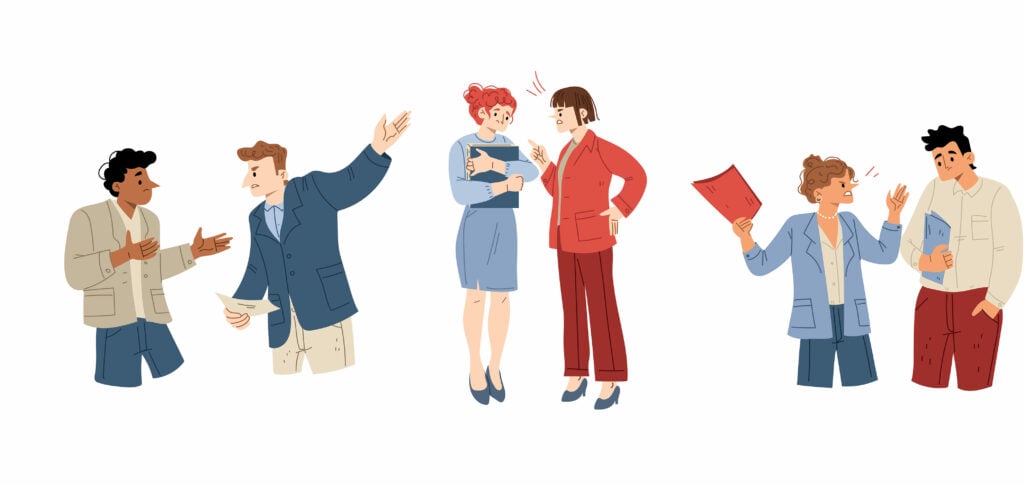“Just because we are discussing political violence It already shows that it is an abnormal election”, says Felipe Borba about the intensification of the problem. (Nexus)
ADVERTISING
When we think about violence, we often only take into account what affects the other physically. But, first of all, the “physical violence is the final act in a sequence of violence that occurs in our communication“, explains Nolah Lima, co-founder of the CNV Brazil Institute, which promotes training in the practice of Non-Violent Communication.
Data from the Political and Electoral Violence Observatory (OVPE) showed that there was an accelerated increase in cases of political violence between July and September this year in the country. According to what the Observatory mapped, the occurrences most common were threats, followed by assaults.
Dialogue, dialogue, dialogue
When we are in a scenario like this, is the answer to seek peace? The great challenge of this search is “thinking that this means not having conflicts”, as explained by Liliane Sant'Anna, co-founder of the CNV Institute Brasil, in an interview with Agora Tocantins. But how so? This is because conflicts, in the view of Non-Violent Communication, can be very constructive.
ADVERTISING
What is Non-Violent Communication?
The facilitator and Professor Ivan Petry explained ao Curto What it is and how this practice came about. Come listen to a snippet:
Find out more about who Marshall Rosemberg was and a basic guide to CNV (You S/A)
Thinking about spaces where way of dialogue possible, experts recommend paying attention to some strategies and key points:
- Limits: when is it time to pause the conversation? How comfortable is this conversation, in these terms, for you?
“In conflictual scenarios like the one we are experiencing, the CNV supports that retomeWe are the center of what we want to take care of and this even reveals to us when to stop a conversation. When we talk about Non-Violent Communication, we are also talking about setting limits and agreeing how we talk.”
According to Liliane and Nolah, even though the practice of Non-Violent Communication does not take the discomfort out of the conversation, it can support people to “sustain discomfort to, perhaps, increase connection, think about alternative paths and have a respectful conversation”.
ADVERTISING
- Negotiation: make agreements.
“So, when we find ourselves in a more heated discussion than we would like, we can say 'I understand that we are talking like this, because we care a lot about this topic, but I want to continue taking care of our relationship here. Are you willing to talk in a different tone of voice?'.”
- Integrity and protection: if the path of dialogue is not possible, focus on taking care of yourself.
“In cases of aggression, we can find one of the limits of the CNV: access to dialogue. Without dialogue, empathetic connection or the possibility of honest conversation is limited. We enter a different field, which requires us to take care of the integrity of those who participate in the conflict. In a context where there is physical aggression, for example, it becomes necessary to put all possible energy into protection. An extremely important distinction here: protection means that any movement will be directed towards caring for the life and integrity of everyone and never towards punishment.”
Politics and universal needs
Ivan Petry, who is dedicated to studying and teaching NVC, explains that it is very useful to understand the common needs that are at stake between participants in a discussion. It is a point of rapprochement, which goes against intolerance, according to the facilitator. Listen:
Political and electoral violence in Brazil: is it current?
According to Felipe Borba, who coordinates the Unirio Electoral Research Group, the escalation of cases in the country can be explained by the fueling of hate speech. “This political polarization, which has existed in Brazil since 1989, has been fueled by a climate of hatred, which says that the opponent is not just an adversary, a person who thinks differently, but is above all an enemy that can be eliminated. (Nexus)
ADVERTISING
However, according to Gisele Barbieri, political advocacy coordinator at Terra de Direito, “the intensification of violence is growing and follows a consolidated pattern even before the electoral period”.
In fact, the situation goes beyond the electoral event. The two months leading up to the first round of elections recorded almost the same number of episodes of political and electoral violence as the first seven months of 2022, pointed out recent study of the Land of Rights and Global Justice.
Curto Curatorship
Researchers study the importance of non-violent communication and the right to voice for children and young people (USP Newspaper)
ADVERTISING
Neither punishment nor reward: using non-violent communication with children (Stay)
Top photo: Freepik.com



